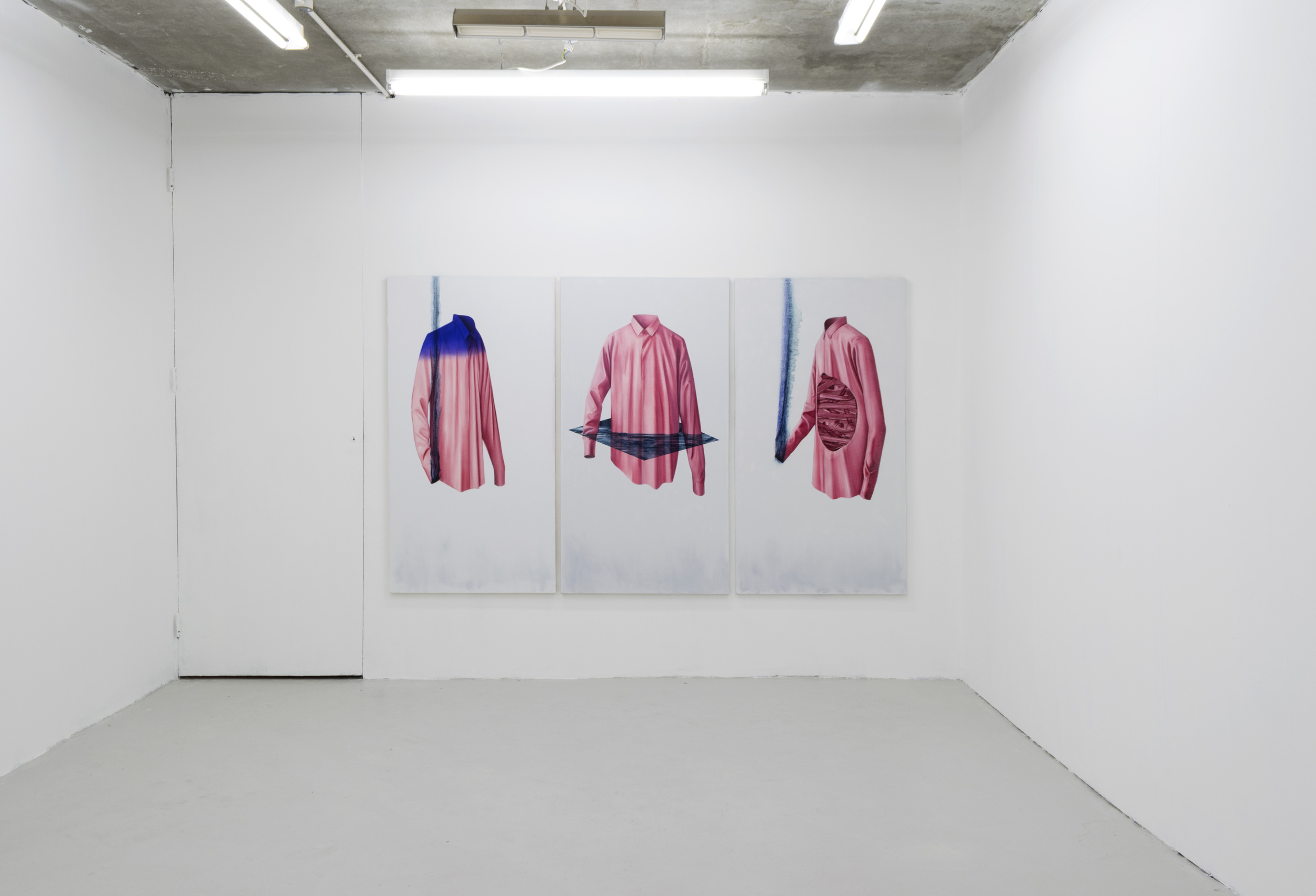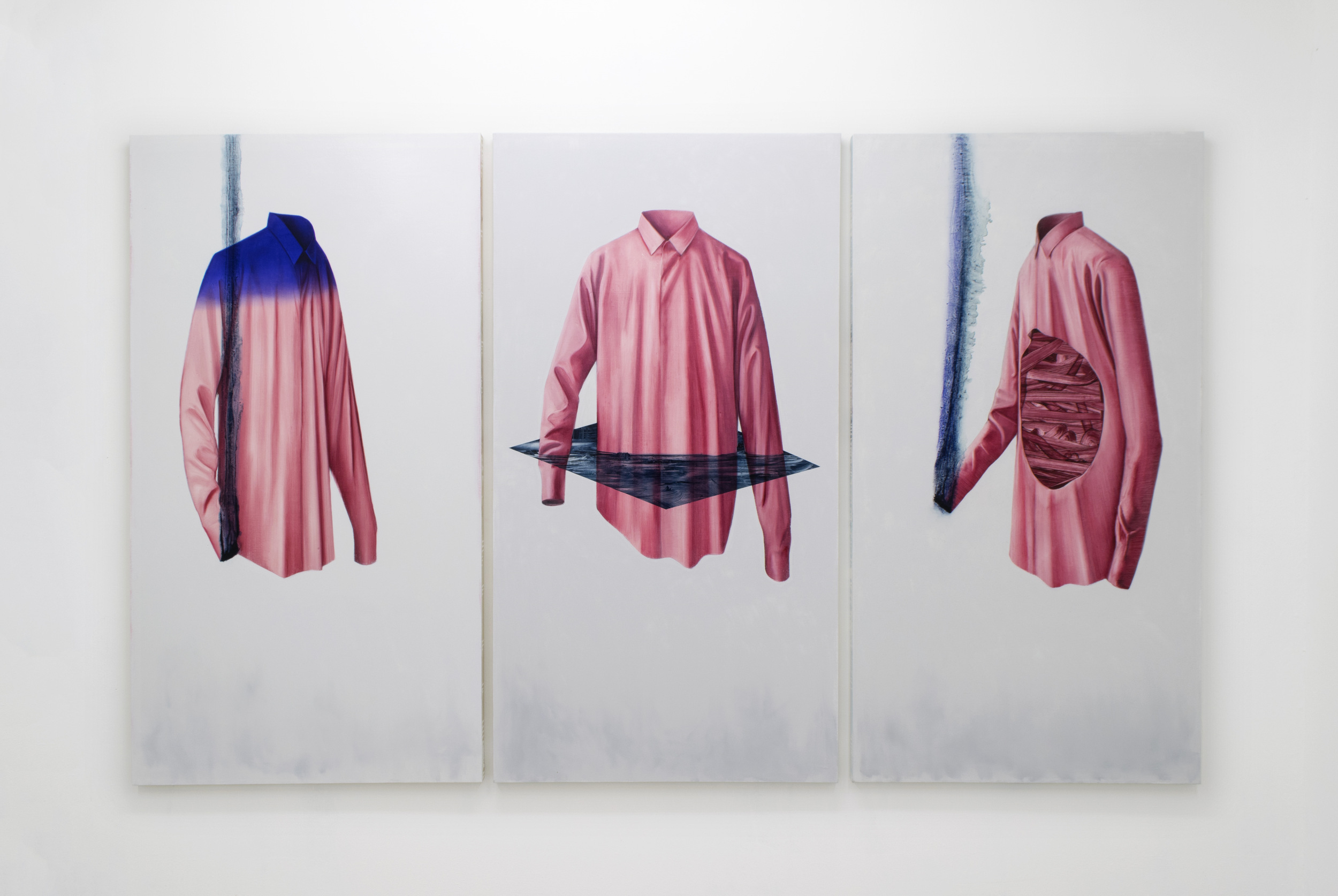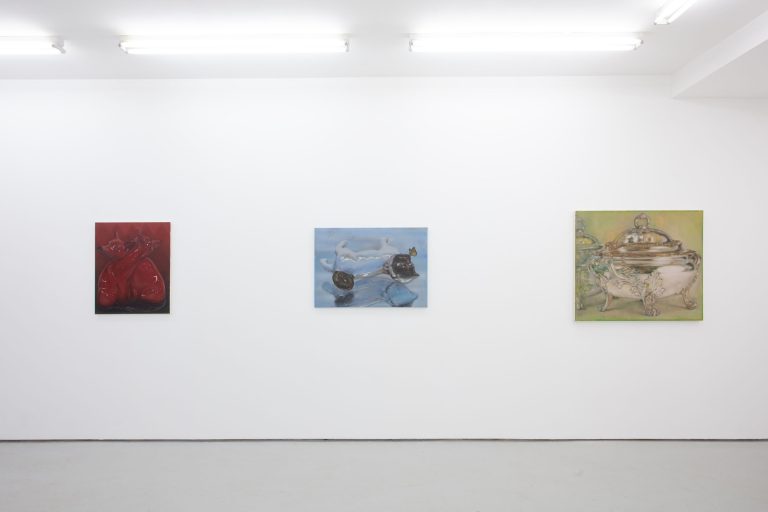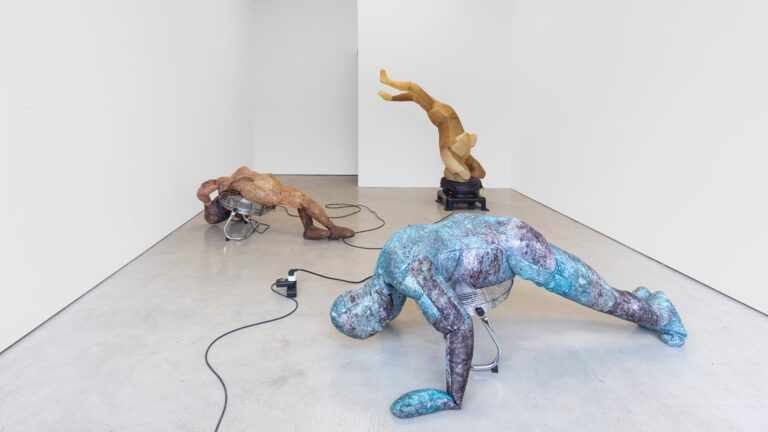Artist: Seth Pick
Exhibition title: Mit Bildung zum Erfolg
Venue: Union Pacific, London, UK
Date: June 3 – July 14, 2018
Photography: all images courtesy of the artist and Union Pacific, London
The modern condition largely arises from a proliferation of objects (commodi-ties) on the one hand, and a proliferation of images (photography) on the other. Together the commodity and the photograph create a reciprocating “objectivity” that sidelines their human component (labor). One model for this is advertising.
-Miller (The Ruin of Exchange, p. 100, 2012, JPR|Ringier)
Reading the above quote, which seems both accurate and well thought out, it still has to be said eighteen years later, that a reconfiguration of the components that form the modern condition has taken place. This is largely due to technolo-gical developments in communication and surveillance or data mining, which in any case is an inseparable twofold; if you want to play (communicate), you have to pay (give up your data). The component of labor, which previously had been sidelined, is now all but obliterated, having been broken up into minuscule pieces of data, left behind as invisible, ghostly traces of daily life.
Rather than forming a single reciprocating objectivity, the collection of data ena-bles new models reconstructed from the broken pieces to arise as bespoke ob-jective realities for each and every person, individually. What initially appears from this process is a domain of new freedom, but it is one that ironically leads everybody down the same barrel hole, like a rotating spur in free fall with infi-nite spikes, carving out these individual paths on its way down. The spikes may change course, but not direction.
As we largely still are human subjects, it is prudent to further examine the human component in this diagram of relations; what about labor? We still are working, hard at it, even more than ever, some might even say, but for what? Fanciful the-ories on contemporary life might be apt in the analyses of our condition, but they say so little about our own suffering. Most people working with computers might be familiar with the intensive continuous reporting they have to do, and stream-lining of every work process. One day all these process might be automated and labor all together will have disappeared.
Like with so many other seemingly groundbreaking things, this doesn’t feel enti-rely new. “History doesn‘t repeat itself but it often rhymes,” as Mark Twain is said to have said… At the basis of both the reconstructed model objectivity and older forms of advertising is a psychoanalytic approach, which incidentally also was the chosen model of interpretation preferred by artists in the modern age.
With the rapid changes and new inventions and ideas proliferating life ever more incrementally, the human mind cannot help but try to organize them in a catego-rical fashion. By this I mean to say that psychoanalysis in it’s infancy was also a model of interpretation that reorganized heaps of historical symbols and myths, wholesale, into categories; paths of contingency that retroactively become de-scriptive as truths—rich histories conflated into archetypes, like bits of data re-organized into model realities.
In “Mit Bildung zum Erfolg” we encounter all around the figure of the double, who also has many names, like alter ego, doppelgänger, fylgje and many more. Alt-hough interpretations of this concept are many and wide, one lingering connec-tion between them is one perhaps illustrated best by the myth of Narcissus, who fell in love with his own image, which resulted in his death. The appearance of the double is an instant gratification of the ego, but it is simultaneously an eerie war-ning of excessive vanity and a reminder of the temporal limitations of the subject.
“Mit Bildung zum Erfolg” means “With education to success” and the German word for education is etymologically linked to Bild, meaning image, but Bildung can also mean form and shape. While originally a slogan of an advertising cam-paign for adult learning, the title could also rather ironically suggest the success of image-making and its consequences.
-Mikael Brkic
Seth Pick, Mit Bildung zum Erfolg, 2018, exhibition view, Union Pacific, London
Seth Pick, Mit Bildung zum Erfolg, 2018, exhibition view, Union Pacific, London
Seth Pick, Mit Bildung zum Erfolg, 2018, exhibition view, Union Pacific, London
Seth Pick, Mit Bildung zum Erfolg, 2018, exhibition view, Union Pacific, London
Seth Pick, Mit Bildung zum Erfolg, 2018, exhibition view, Union Pacific, London
Seth Pick, Mit Bildung zum Erfolg, 2018, exhibition view, Union Pacific, London
Seth Pick, Mit Bildung zum Erfolg, 2018, exhibition view, Union Pacific, London
Seth Pick, black rose, 2018, Oil on Canvas, 50cm diameter
Seth Pick, Untitled, 2018, Oil on Canvas, 60 cm x 50 cm (each) Diptych
Seth Pick, Untitled, 2018, Oil on Canvas, 60 cm x 50 cm (each) Diptych
Seth Pick, Inheriting the fears of fathers (after S.F.), 2018, Oil on Canvas, 60 cm x 40 cm (each) Diptych
Seth Pick, Let the rivers run (Flare), 2018, Oil on Canvas, 150 cm x 80 cm (each) Diptych
Seth Pick, There is no reason to go on being foolish forever (Scarecrow), 2018, Oil on Canvas, 150 cm x 80 cm
Seth Pick, Boredom meaninglessness and exhaustion (Smokers), 2018, Oil on Canvas, 150 cm x 80 cm (each) Triptych
Seth Pick, Boredom meaninglessness and exhaustion (Smokers), 2018, Oil on Canvas, 150 cm x 80 cm (each) Triptych
Seth Pick, Boredom meaninglessness and exhaustion (Smokers), 2018, Oil on Canvas, 150 cm x 80 cm (each) Triptych






















